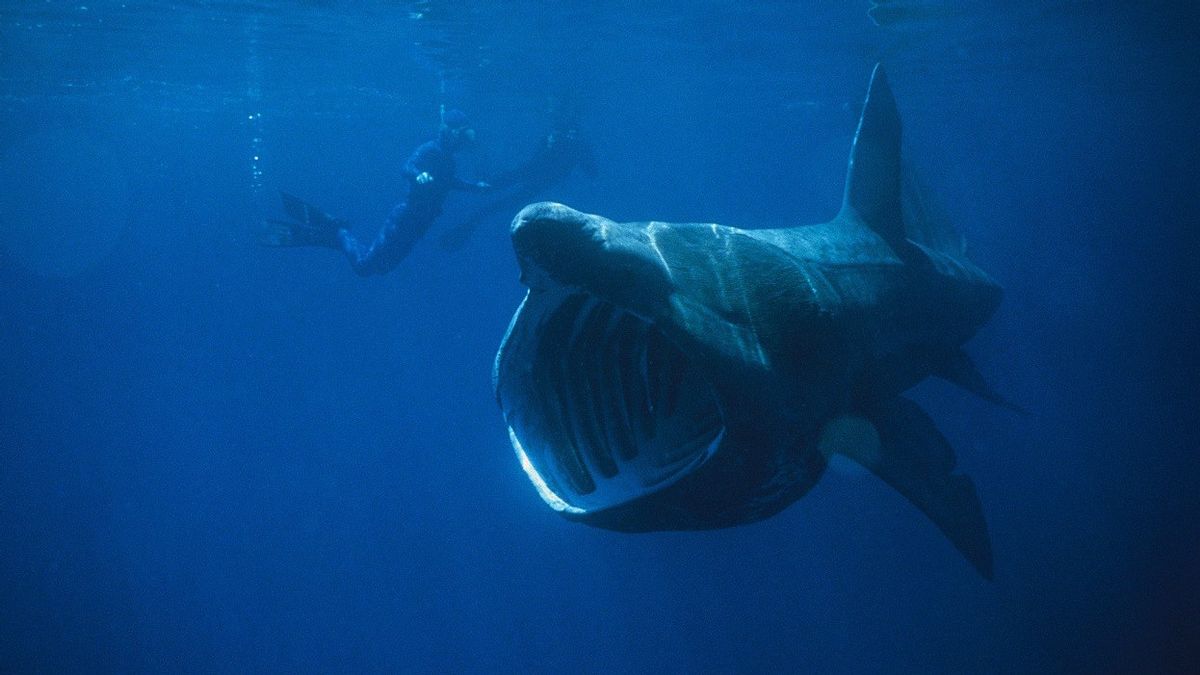JAKARTA - Researchers from Naturescot and the University of Exeter, England managed to reveal the surprising behavior of the basking shark, through observations by installing a camera on the shark's body.
From the analysis of the recordings obtained, researchers were surprised that sharks, which were originally thought to be solitary animals, turned out to socialize on the seabed, engage in touch and rise to the surface together, a ritual believed to be pre-mating.
"To be fish, they don't have to be on the surface. They spend 88 percent of their time on the ocean floor," said PhD student Jessica Rudd, who led the research, citing Euronews Friday, August 6.
"It's the first time we've been able to see what they're doing. The shark's eye view helped us with a lot of insight. It was amazing, we saw a shark emerge from the darkness all the way to the surface, 70 meters in about 77 seconds. It was a privilege to have this insight , to see what's happening from a shark's point of view, something you haven't seen before," said Rudd.
How can this research help marine conservation? Researchers were able to spot large schools of sharks in the Hebrides Islands, Scotland.

"Everyone was completely speechless watching the footage, then everyone gasped, from seeing a shark to seeing four to nine sharks on the ocean floor. It was spectacular," said Rudd.
Researchers believe sharks travel up the coast and into the Mediterranean, returning to the Hebrides to forage for food and possibly to mate.
"It's an opportunity to meet other sharks. Although we didn't catch any mating behavior, we did see the display before courting," he continued. The theory of mating behavior is based on observations of the mating practices of other shark species.
The work that has been done since 2012, has contributed to the designation of feeding areas into marine conservation zones, protecting shark feeding grounds and reproductive potential for future generations.
"We are very excited about this research, and how the technology continues to contribute to our understanding of basking shark behavior within the Hebrides Marine Marine Protected Area (MPA)," added Dr Suz Henderson, NatureScot Marine Ecosystem Manager.

Advances in technology have made it easier to do this kind of work with larger memory capacities, higher resolutions, and lighter cameras, all making observations more sophisticated.
The basking shark, which is the second largest fish in the world, is found worldwide. However, the population is vulnerable and in the north Atlantic (where the research takes place) they are threatened with extinction.
Although it is illegal, hunting for it is still ongoing today, because of its rich fish oil content and of course hunting for its fins.
"We can use animals as oceanographers, you can research the oceans in a way you couldn't before, see depths you can't get to or go into parts of the Arctic you can't reach," said Rudd.
"Different species can help identify areas of risk in the oceans because of the way they use those waters, they can monitor them in ways that humans can't."
The English, Chinese, Japanese, Arabic, and French versions are automatically generated by the AI. So there may still be inaccuracies in translating, please always see Indonesian as our main language. (system supported by DigitalSiber.id)













